LOVE SONGS OF THE MID-60s Part Three FULL TEXT HERE
EXTRACTS
Love Is Just a Four Letter Word, also written around this time period, is one of Dylan’s least known songs, mainly because there is no record of him recording it, even on bootlegs. It is most associated with Joan Baez, who has claimed in a number of interviews that she rescued it ‘from the back of a piano’ when Dylan had forgotten it. This is a little hard to believe, as it is one of Dylan’s must subtle and unusual pieces. It is also quite possible that when he wrote the song he was caught in (at least one) ‘love triangle’ involving Baez herself. Perhaps he actually intended to give the song, which seems far too carefully constructed to be a ‘throwaway’, to her. Her extraordinarily pure cut glass vocal style certainly suits its detached and wistful tone. But the song is not in any way ‘about’ her relationship with Dylan.
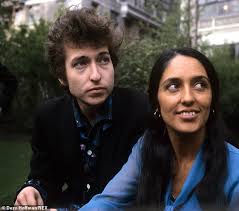
The title phrase is a common aphorism which has been around since the 1920s, generally depicting a cynical view of love. However, the term ‘four letter word’, which is generally associated with swear words, can also be a simple description without such connotations. Dylan plays on this ambiguity in a song in which he addresses the nature of love itself, despite the fact that that none of the characters actually appears to be in love. But the narrator’s observation of a broken love affair leads him to come to certain philosophical conclusions regarding the true nature of love itself.

The song begins with the narrator looking back at a meeting with a woman in a café. The first lines draw us into the story with the mysterious statement …Seems like only yesterday I left my mind behind… which already seems to indicate that this will be a ruminative piece. The meeting takes place …down in the Gypsy Café with a friend of a friend of mine… This ‘friend of a friend’ has a new born baby which …sits heavy on her knee…indicating that she is a single parent. We might now expect the woman to relate a tale of woe but instead she declares the she is happy to be free from what she describes as ‘slavery’ (presumably the relationship or marriage to the narrator’s friend). We are told that her eyes …showed no trace of misery… Despite this, first use of the title phrase as a refrain seems to indicate the narrator’s view that she has been abandoned and that, in her case, love is indeed a ‘dirty word’.
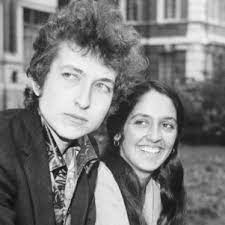
This revelation leads the narrator to conclude that …I know now that traps are only set by me… He realises that he has been making it impossible for him to find this ‘holy love’ by setting artificial parameters. He now tells us that he does …not really need to be assured/ That love is just a four letter word… But now the meaning of the phrase has changed. ‘Love’ itself is not ‘a dirty word’ or a curse that creates torturous pain. It is, after all, just a word. And words, as this and so many other Dylan songs demonstrate, can be interpreted in many different ways. When placed in different contexts (or when sung differently) they may change their meanings. Thus the narrator realises that love can take many forms. Even if one finds a supposedly perfect partner, the relationship may not last ‘for eternity’. Love itself will change as years go by and may morph into many different shapes. The realisation that ‘love’ is merely an ambiguous concept, rather than a definite description of a goal one must reach, helps him recognise that this single word is inadequate to describe the range of feelings and behaviours it is usually taken to signify. The narrator has only discovered this revelatory truth by observing love – or the lack of it – in others.
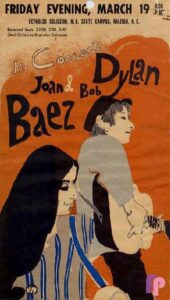
The final verse that Baez sings is rather controversial. In the official lyrics the ‘holy kiss’ verse concludes the song. This seems entirely logical given its revelatory nature. But Baez, in her recorded version, adds an extra verse. Some commentators have theorised that Baez actually wrote this verse as it appears to be directed from her to Dylan. Certainly the poetic diction is less assured than in the rest of the song. The opening: …Strange it is to be beside you/ Many years the tables turned… is awkwardly ungrammatical, as are the following lines: And it is very, very weird indeed/ To hear words like forever, fleets/ Of ships run through my mind, I cannot cheat/ It’s like looking in a teacher’s face complete…. The ‘fleets of ships’ metaphor sits rather awkwardly with the rest of the song. Perhaps the most effective lines are those in the simple conclusion: …I can say nothing to you but repeat/ That love is just a four letter word… Baez seems to be acknowledging that Dylan has been her ‘teacher’ – not just about music, perhaps, but about love. She has performed the song on many occasions. In live shows, however, she has almost always omitted Dylan’s final verse and substituted it with her own, which – despite it lacking the poetic grace of Dylan’s words – may have been much truer to her own feelings.
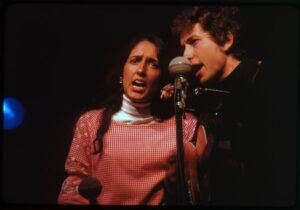
Bringing it All Back Home features two quite beautiful love songs which appear to provide some resolution to Dylan’s journey through the vicissitudes of love. His songs now take on multiple layers of ambiguity. She Belongs to Me is here a slow, gentle blues; although in its multiple iterations throughout Dylan’s career it has taken many forms. The version which appears on Self Portrait, recorded at the Isle of Wight in 1969, presents it almost as a mock show tune. There are many covers, including a meditative performance from Jerry Garcia and Dave Grisman (1992), a raw vocal version by Leon Russell and an extended prog-rock extravaganza by The Nice (1969). The song is fairly minimal, consisting of just four short verses. In traditional blues manner, the first two lines of each verse are repeated. This has the effect of underlining the narrator’s devotion to his subject, who he seems almost to worship. Certainly he seems quite prepared to sublimate himself to her wishes.
The woman (who certainly cannot be called a ‘girl’) seems to be emotionally mature, immensely self assured and self confident. She has her own independent artistic life, which Dylan celebrates: …She’s got everything she needs/ She’s an artist, she don’t look back… In his eyes she has magical gifts which have turned his view of the world upside down: …She can take the dark out of the night time and paint the daytime black… In the second and fourth verses he switches the mode of address to ‘you’, so broadening the scope of the song. He continues: …You will start out standing/ Proud to steal her anything she sees/ But you’ll wind up peeking through her keyhole down upon your knees… intimating that his love for this powerful woman will be so intense that he will even break the law to please her. The last line has definite sexual connotations, with the suggestion that the woman will dominate him sexually. He devotes himself to her pleasure while on his knees by giving his attention to her ‘keyhole’. Clearly this is the same orifice as in Virginia Liston’s 1924 blues You Got the Right Key but the Wrong Keyhole.
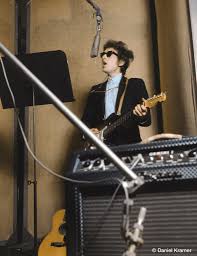
The second half of the song again begins with a description of the woman’s qualities. We hear more testimonies to her strength of character; … She never stumbles, she got no place to fall … and that …She’s nobody’s child, the law can’t touch her at all… There is a slight nod to the famous tearjerker Nobody’s Child, first recorded by Hank Snow in 1949. But here the phrase, originally describing a pitiable figure, becomes another mark of the woman’s independence and power. In one of the song’s most striking images, we hear that …She wears an Egyptian ring that sparkles before she speaks…. This suggests that she has magical or entrancing qualities …She’s a hypnotist collector, you are a walking antique… reverses the conceit of the title phrase, which is now revealed as being ironic. In fact the singer ‘has become part of her ‘collection’. The song ends in typically low key blues style. The instruction is given to …Bow down to her on Sunday, salute her when her birthday comes/ For Halloween buy her a trumpet, for Christmas give her a drum… It seems that, in the singer’s mind, this ethereal creature requires such ritualised tributes.
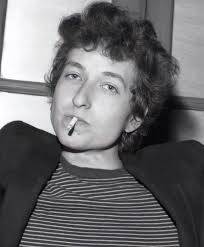
Love Minus Zero/No Limit can be seen as the culmination of this series of songs. Here Dylan’s poetic powers are fully invoked, so that even its simplest lines can set off multiple interpretations. As with She Belongs to Me, the female subject is idealised and given ‘special powers’. But Love Minus Zero is more consciously poetic, employing a number of literary allusions with much shifting and surreal imagery. In many ways this lyrical complexity foreshadows Dylan’s work in his densely ambiguous songs of the late 1990s and 2000s. The way the title, which does not appear in the song, is presented is very unusual, with a forward slash between its two parts. At the time Dylan insisted that this was a mathematical formula. ‘Love divided by nothing’ can, of course, only result in ‘infinity’. The song is indeed an awesome celebration of a love which is simultaneously limitless and grounded in reality.
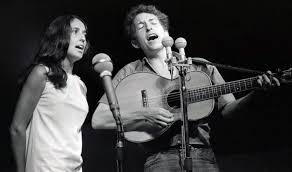
In the next verse, we learn that the narrator’s lover cannot be ‘bought off’ by sentimental gifts: …People carry roses, and make promises by the hours/ My love she laughs like the flowers/ Valentines can’t buy her… She remains incorruptible. There are echoes here of the seventeenth century poet Robert Henrick’s To the Virgins, to Make Much of Time, which begins: …Gather ye rose-buds while ye may/ Old time is still a-flying/ And this same flower that smiles today/ Tomorrow will be dying… as well as more lines from Sonnet 130: …I have seen roses damasked, red and white/ But no such roses see I in her cheeks… There are also hints of Blake’s Sick Rose, Wordsworth’s Daffodils and the famous anti-war folk ballad Where Have All the Flowers Gone? In all of these works, flowers are animated symbols of pure love and beauty, even if they have been corrupted. Yet the mention of ‘Valentines’ (greeting cards which are often accompanied by flowers, especially roses) indicates that her affection cannot be bought.
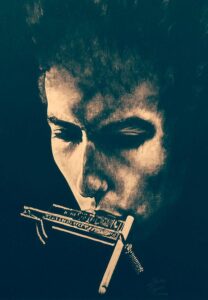
Having established his lover as a kind of pure, ethereal spirit, Dylan then examines various aspects of the ways in which many people spend their lives attempting to find truth, happiness and fulfilment, with the wonderfully succinct …In the dime stores and bus stations/ People talk of situations/ Read books, repeat quotations/ Draw conclusions on the wall… He appears to be suggesting that much of this philosophising is rather futile. His lover …knows there’s no success like failure, but failure’s no success at all… another apparently contradictory ‘Zen koan’ which may be a way of expressing the fact that fame and success do not necessarily bring understanding of other people.
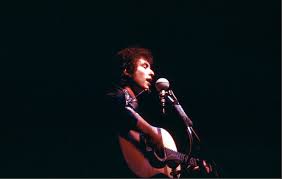
The imagery in the following verses becomes increasingly surreal, leading the listener off in a number of different directions. We hear that …The cloak and dagger dangles/ Madams light the candles/ In ceremonies of the horseman/ Even the pawn must hold a grudge… The chess-related metaphor, with the unforgettable phrase ‘ceremonies of the horsemen’ suggests a kind of ritualised warfare, which the ‘pawns’ in ‘their game’ naturally object to ‘Cloak and dagger’ is a slightly comical description of shady dealings which here appear to hang, presumably like the Sword of Damocles, over people’s heads. In a reversal of traditional morality, the ‘madams’ – who may be brothel keepers – are apparently showing their religious devotion by lighting candles.…Statues made of matchsticks crumble into one another… is a beautifully expressed summary of the futility of human aspiration. But the narrator’s lover is apparently not affected by this as …She knows too much to argue or to judge… Again, her non-judgemental qualities are held in high esteem.

Love Minus Zero is a remarkable fusion of the poetic techniques which Dylan had picked up from his extensive reading and the traditions of the blues and country music which form the bedrock of his art. Despite its use of dreamlike imagery and logic it is a very real and extremely moving evocation of love which, after the heartbreak of songs like Ballad in Plain D, I’ll Keep It With Mine and One Too Many Mornings and the uncertainty of Love is Just a Four Letter Word, seems to represent a considerable breakthrough. Dylan now seems unburdened by the pain of love he has experienced in the past. Soon, on Blonde on Blonde, which is largely an album of love songs, he will extend the possibilities of the genre even further to create the massive poetic tapestries of Visions of Johanna and Sad Eyed Lady of the Lowlands. The lovers in these highly ambiguous works are multidimensional creatures while the songs themselves tilt at universal truths. The characters in these songs, like the lover in Love Minus Zero, will become transformed – like the mythical figures in Ovid’s Metamorphosis – into representations of love itself, with all its attendant confusions and contradictions but also with its moments of ecstatic realisation and poetic transcendence.


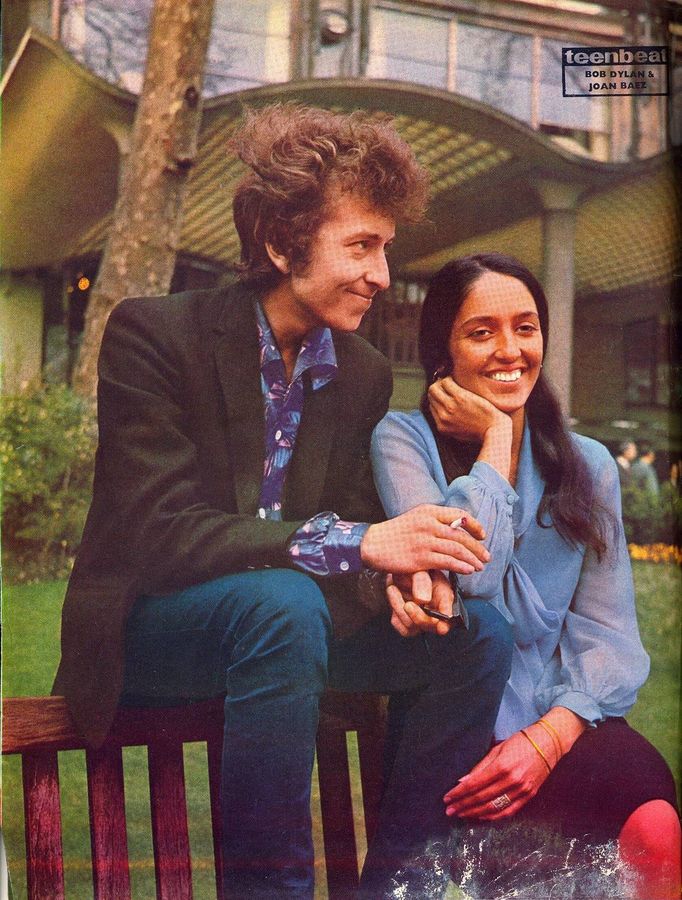
Leave a Reply